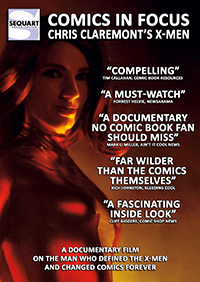Part Four: Final Thoughts
Youngblood delivered a hyper-realistic experience of explosions and Adonis and Venus like superhumans in extreme conditions making use of extreme powers. Unfortunately, the super-team failed to deliver a truly super-heroic experience. Character development and substantive storytelling took a backseat to action-packed visual experiences. Readers often found themselves unsure as to why punches were being thrown and exactly what made certain characters the villains when their backgrounds and motivations were hardly explained, let alone shown. Further, many readers familiar with the collecting side of comics may notice the ways dynamic action splashes were favored over panels that would otherwise help drive the narrative. Considering the demand for Liefeld’s work even today, let alone during the height of his popularity when Youngblood was first being published, one cannot help but wonder if the original art market motivated at least some of the artistic choices in composing each page of the first issues.
For all of the faults in the first issues of Youngblood, however, one cannot overlook the fact it was the best-selling independent comic book until the publication of Todd McFarlane’s Spawn #1. While it is easy to look back on this comic book series and criticize it for its failure to truly provide readers with something unique and genre defining, it is equally clear the readers of the time were not looking for a reading experience of this sort. Creators like Liefeld proved adept at providing a sort of mirror for their readers’ culture and desires. While present day comic readers, collectors and critics scoff at the Liefeld’s work, the direct market and its customers gladly embraced what these comics offered during the height of his popularity. American culture often treated its celebrities as the “royalty of meritocracy,” and the 1990s would see this trend rise to excessive heights with the increased role of television and mass media in the home. Rob Liefeld sought to create a line of comics that reflected a sort reality show of a world that might be if superheroes really existed –a hyper-reality that provided readers with explosive action filled with big, brawny men solving international problems with their fists with lithe, yet busty, babes ever present and in abundance. We as readers, collectors, and critics are well within our rights to point out all of the flaws in the early works of Image as the early issues of Youngblood epitomize in many ways; however, we cannot fail to point out the copies we also purchased when they were first published which encouraged creators like Liefeld to produce more of the same.
Furthermore, we shouldn’t find it surprising that Image Comics and their brand of hyper-realistic comics experienced such explosive popularity during the early 1990s. In 1992 – the same year Image was founded – reality television first burst onto the scene in the form of MTV’s The Real World, the first of many reality television shows providing voyeuristic audiences with the chance to glimpse into the lives of people leading more intoxicating (figuratively and sometimes literally) lives than their own. In 1991, CNN made television history by providing the only news coverage of a live war as it was happening in Iraq. Further, they were the only news network providing 24-hour coverage. When taking into account the hundreds of reality-based television shows and the sensationalistic news coverage by an excessively increasing number of news outlets during the years following the early 1990s and into the early 21st Century, one might argue creators such as Liefeld prefigured the hyperrealism of media we experience today where viewing audiences’ hunger for sex and violence never seems to be fully satiated. So while these comic books do not possess the depth and nuance most comics scholars look for from comics for literary analysis, they do serve as valuable cultural artifacts for better understanding the culture and times in which they were created. Perhaps more importantly, they provide readers and critics with a telling gauge of just how far Image Comics has grown and matured over the course of the past twenty years since Youngblood first appeared on newsstands and in local comic shops.























































